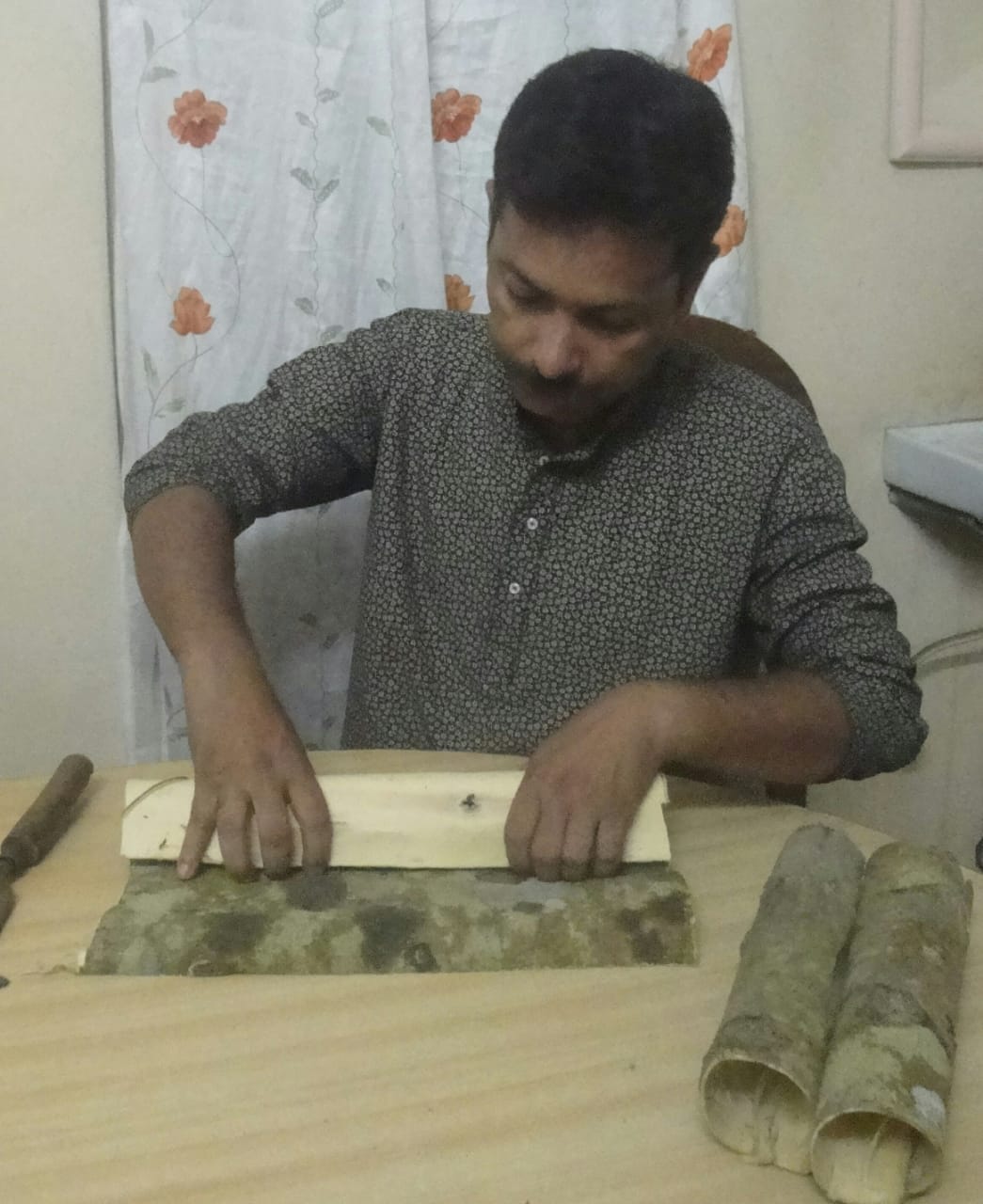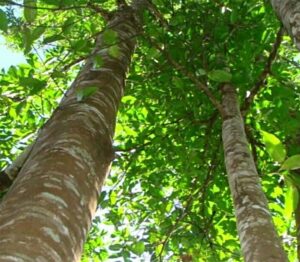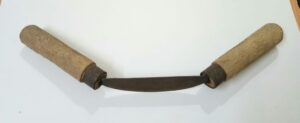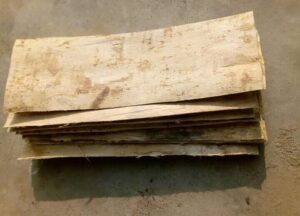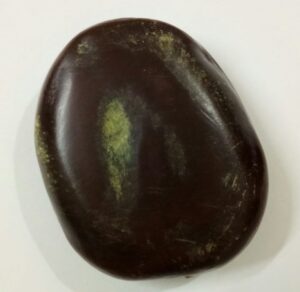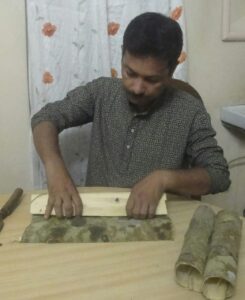In ancient times, when paper was not in use in Assam, manuscripts were written on tree bark. It is not known when that flow continued. The bark used to write manuscripts or draw pictures was made in a special way. Sanchi leaves are not actually the leaves of the Sanchi tree. Writing sheets made from the bark of a Sanchi tree is a complex and lengthy process. The method is as follows-
METHOD OF PREPARING SĀŇCIPĀT
For preparing Sāňcipāt the tree having about 15 or 16 years of growth and 30 to 50 inches in girth measuring about 2.5 or 3 feet above the ground, is selected. Matured Sāňci trees are selected to prevent Sāňcipāt from being eaten up by mites and other insects. To remove or collect the Sāňci bark, sharp pointed knives are used. After marking a particular area with the help of a sharp knife, the collector extracts the bark slowly from the tree in a way similar to Banana tree bark (Kolpatuā). The bark is then cut down into strips required for preparing projected books as and when needed. The strips are rolled up separately with the inner or white part inside and are dried under the sun for a few days. After properly drying the barks, they are kept underwater for 3 to 4 days. After cutting them into pieces, it again needs to be dried up under soft sunshine. Now it is to be cleaned by a particular knife known as Jon Kotārī. The shape of the knife is like a half moon so people named this knife Jon Kotārī. This process has to be done on a hard wooden piece to facilitate the removal of the outer or scaly portion of the bark. The process is again repeated on the inner white part to extract the glue-like material. They are then rubbed with a burnt brick for getting a smooth surface. The process has to be repeated for both sides. A paste is prepared by mixing Hāitāl (yellow arsenic), māṭimāh (black gram) and bel āthā (glue of bel) and then it is applied on both sides. The bark has to be dried up again and it has to be rubbed by the burnt brick again. After this, the bark strips have to be rubbed by ‘ghilā guṭi’ on both sides. After getting a smooth surface, the bark strip has to be rubbed by a koṅch. Rubbing the bark with the koṅch makes it fine-polished. The process is now complete and the strips are ready for use.
Plenty of Sāňci (Aloe) tree is found in several parts of Assam. The oil of the Sāňci tree is extracted from its softwood (again in Assamese). For a long time, this oil is exported to the Western part of Asia. But for manuscript writing or illustration barks of this tree are required. Sir Edward Gait, the famous British historian also mentioned the craft of preparing manuscripts in Assam in his book A History of Assam, and he states that “A tree is selected of about 15 or 16 years growth and 30 to 50 inches in girth measured about 4 feet from the ground, from this the bark is removed in strips from 6 to 18 feet long and from 3 to 27 inches in breadth. These strips are rolled up separately with the inner or white part inside and are dried in the sun for several days. They are then rubbed by hand on a board, or some other hard substance, to facilitate the removal of the outer or scaly portion of the bark. After this, they are exposed to dew for one night. Next morning the outer layer of the bark (nikarī) is carefully removed and the bark proper is cut into pieces of a convenient size ranging from 9 to 27 inches long and 3 to 18 inches broad. These are put into cold water for about an hour and the alkali is extracted, after which the surface is scraped smooth with a knife. They are dried in the sun for half an hour and when perfectly dry rubbed with a piece of burnt brick. A paste prepared from māṭimāh (phaseous radius) is next rubbed in and the bark is dried yellow using yellow arsenic. This is followed again by sun drying, after which the trips are rubbed as smooth as marble. The process is now complete and the strips are ready for use.”[1] There are two types of surfaces, which are required for preparing Sāňcipāt and Tulāpāt. Another rarely used surface is Ketekī pāt.
The Agaru or Sāňcipāt has some important qualities for which people generally choose it for writing purposes. The qualities constitute its significant bitter and pungent taste. It is lighter in weight but strong. It can be easily pierced. It is considerably fire resistant also.
Diganta Hazarika
Garamur, Majuli, Assam (India)
Email- digantahazarika69@gmail.com

